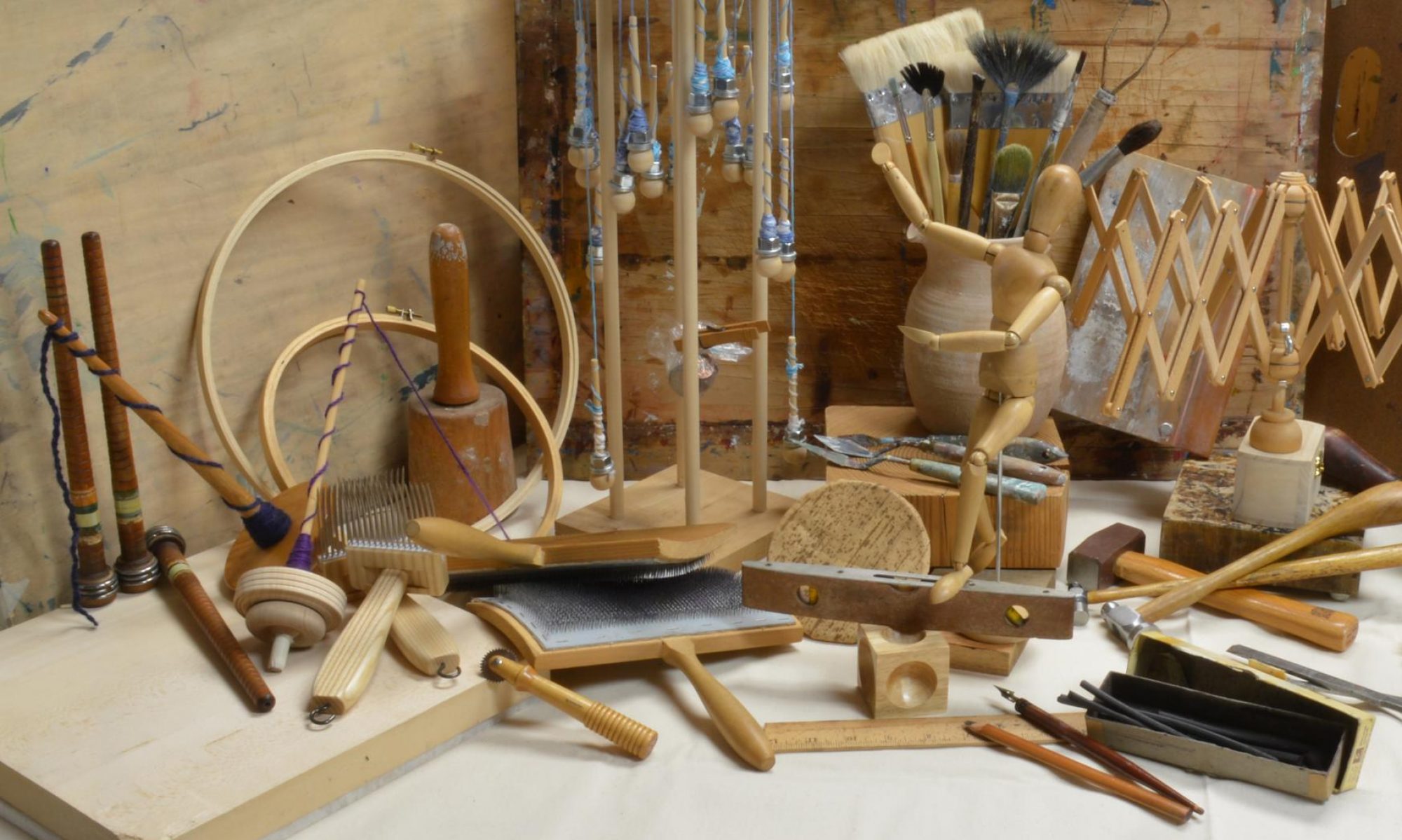Back in the Olden Days* people used to cough and sneeze into a handkerchief.
Medical masks have a strict criteria and are precisely made with specialized materials. Outside of that world, homemade masks can help reduce the outward spray of droplets from a cough or sneeze. Think of Homemade Masks as a constantly worn handkerchief.
With experience in garment making we were full of suggestions for handsewn masks (consider a box pleat rather than knife pleats, etc.). Then we figured that everyone with that skill set is already problem-solving and has advice to offer to us!
So this blog post will focus on coming up with creative solutions to cover your nose and mouth using materials at hand.
A brief note about our Styrofoam Head Model: nothing fits her well – she has no ears!
Dish Cloth Bandhana
This idea is a good grab and go, launder often option. This is big enough to cascade over the shoulders.
Our Great Grandmother embroidered this dish cloth:
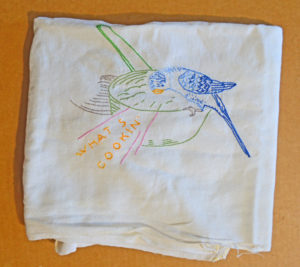
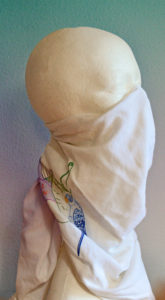
Kitchen towel mask – a more secure variation.
Also, it has the advantage of being able to eat and drink through a straw while wearing.
Supply list
- woven towel (this one is from a $store)
- two safety pins (or sew on buttons or snaps)
- Gift ribbon (or anything long and flexible like shoe laces, strips of fabric, etc. . .)
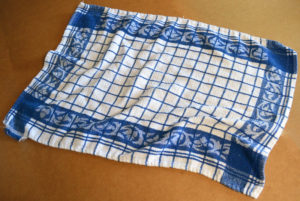
Fold towel on the diagonal. The bias allows the material to curve up over the nose better.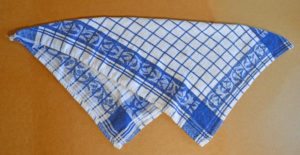
Measure your face by stretching your hand pinky to thumb from temple to temple. Place two safety pins this far apart , centered, one inch from the folded edge. Make certain that the points are aimed down, away from your eyes. Or stitch on the ribbon ends in the third step.
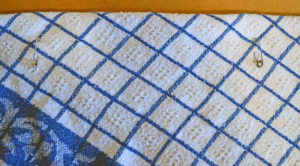
Tie on ribbons to the pins, or stitch on, long enough to tie around your head.
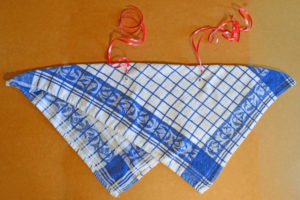
Fold down the excess fabric above the pins so that it points to the center.
Front view:
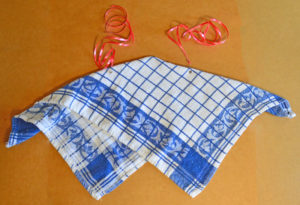
Back view:
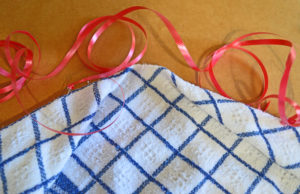
All finished!
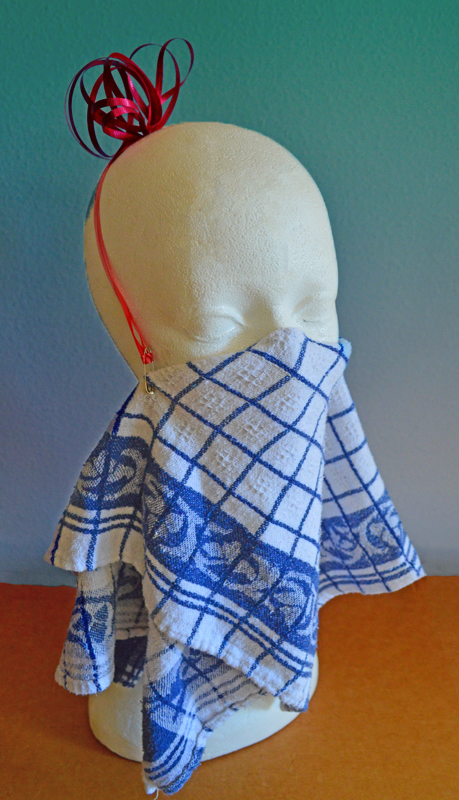
Clothing, worn backwards
This has a couple advantages. It can match a uniform if a Deemed Essential Job requires it. And probably more importantly, small children may be willing to play the “Let’s wear our shirts backwards game ” or more simply “Let’s dress silly today!”!
Notice on this turtleneck, sweatshirt and t-shirt how the back of the necks are cut higher than the fronts. This extra fabric can cover the mouth and nose if worn backwards. This is a good way to use outgrown clothing, a child’s size t-shirt makes a good mask for an adult woman, or temporarily stitch the neck smaller to fit as we did for the sweatshirt on the mannequin photograph.
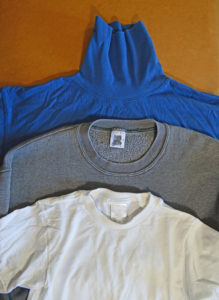
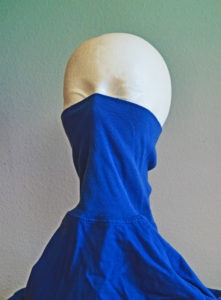
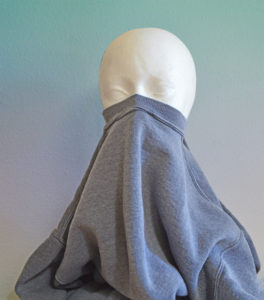
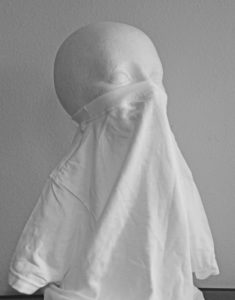
You can increase the barrier with a second step. Pin or stitch the sleeves in front:
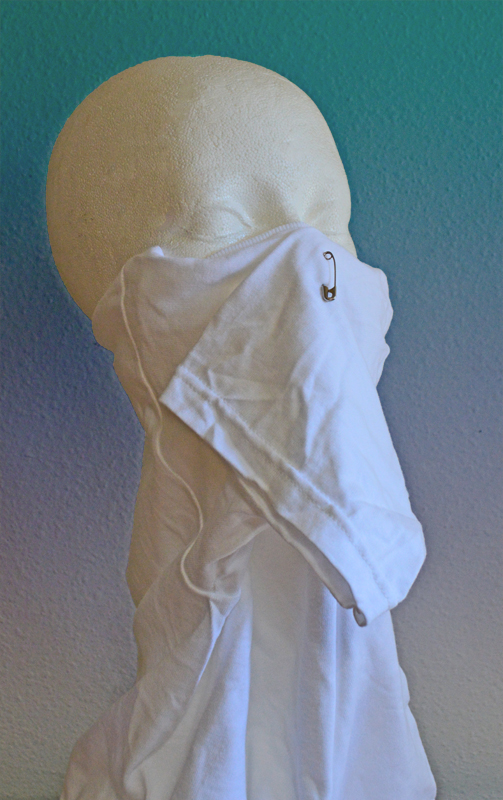
Clothing, a more fitted version.
Wear a hoody backwards! Notice how the curve of the hood matches a facemask curve. Attach ribbon, cords, yarn or fabric tapes with snaps, buttons, safety pins (point away from the eyes!), staples or even sew on. Use a garment with an attached hood, or a detachable one for more freedom of movement.
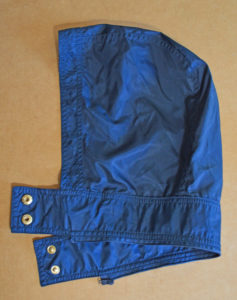
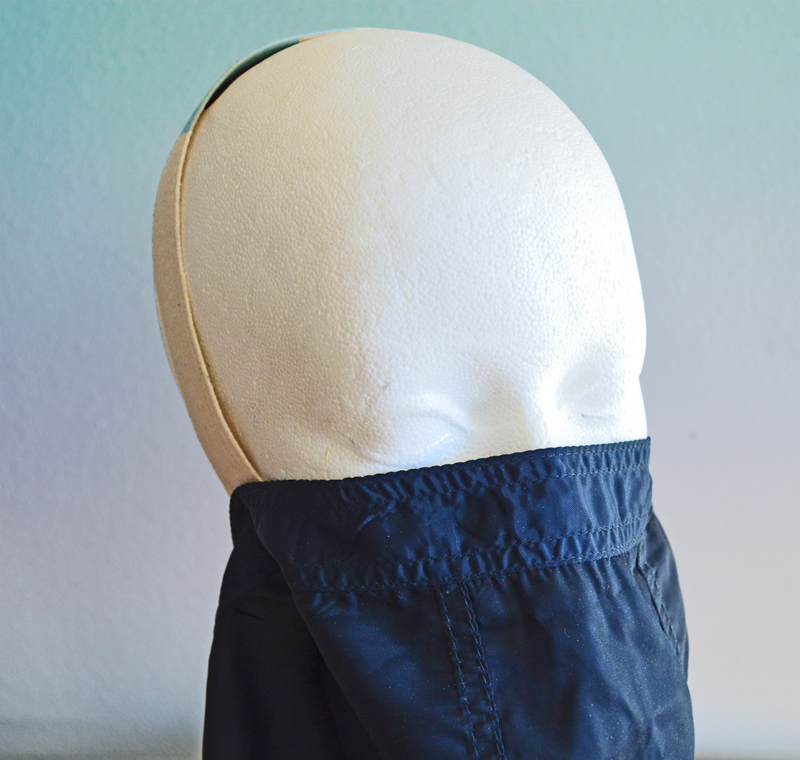
Please remember to let your Creativity in on your problem solving. You may be surprised at what your intuition inspires!
- Be Resourceful
- Be Mindful
- Be Thoughtful
- Be Well
We hope this helps ease some worries.
from Allyson and Kristin
*When men used to tuck in their shirts and women wore their underwear under clothes!
